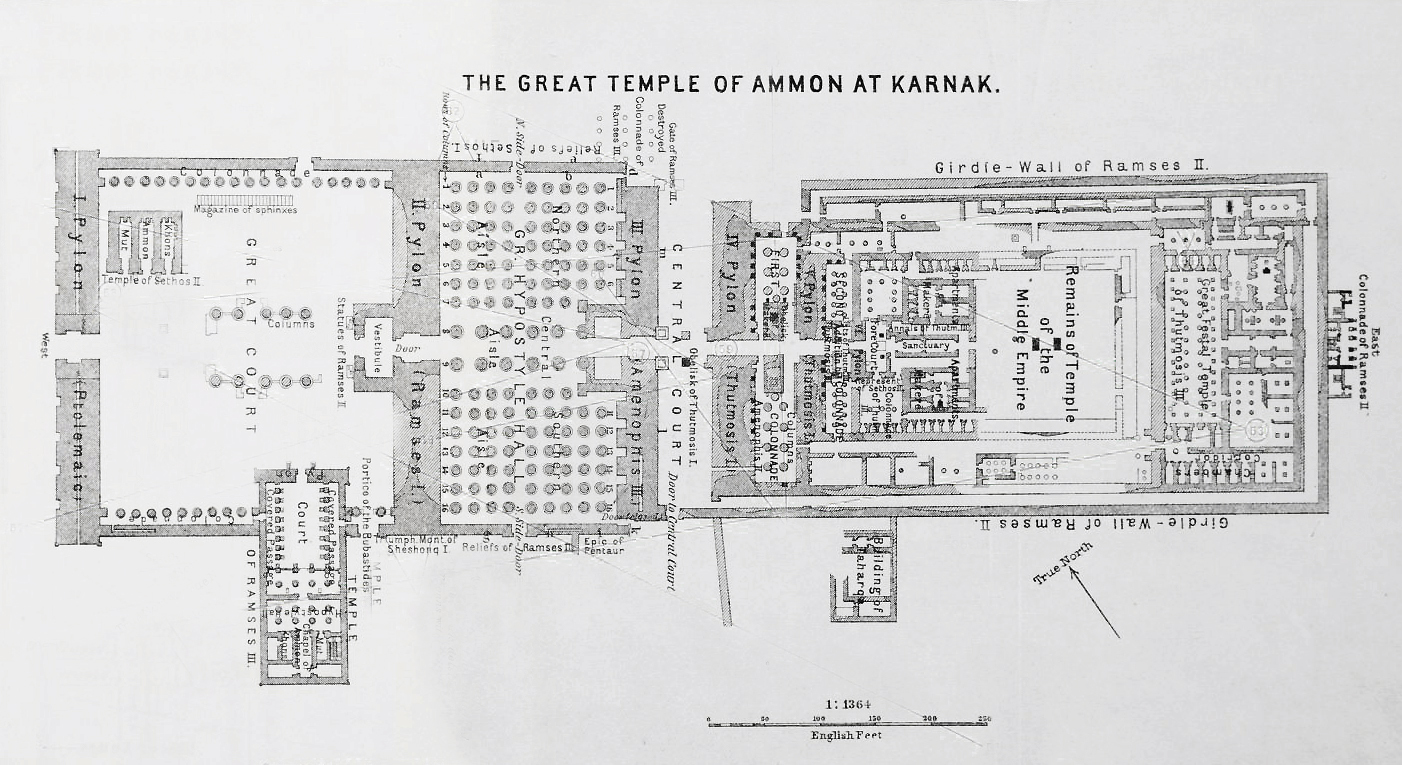The massive temple complex of Karnak was the principal religious center of the god Amun-Re in Thebes during the New Kingdom (which lasted from 1550 until 1070 B.C.E.). The complex remains one of the largest religious complexes in the world. However, Karnak was not just one temple dedicated to one god—it held not only the main precinct to the god Amun-Re—but also the precincts of the gods Mut and Montu. Compared to other temple compounds that survive from ancient Egypt, Karnak is in a poor state of preservation but it still gives scholars a wealth of information about Egyptian religion and art.
“The Most Select of Places”
The site was first developed during the Middle Kingdom (2055-1650 B.C.E.) and was initially modest in scale but as new importance was placed on the city of Thebes, subsequent pharaohs began to place their own mark on Karnak. The main precinct alone would eventually have as many as twenty temples and chapels.[1] Karnak was known in ancient times as “The Most Select of Places” (Ipet-isut) and was not only the location of the cult image of Amun and a place for the god to dwell on earth but also a working estate for the priestly community who lived on site. Additional buildings included a sacred lake, kitchens, and workshops for the production of religious accoutrements.
The main temple of Amun-Re had two axes—one that went north/south and the other that extended east/west. The southern axis continued towards the temple of Luxor and was connected by an avenue of ram-headed sphinxes.
While the sanctuary was plundered for stone in ancient times, there are still a number of unique architectural features within this vast complex. For example, the tallest obelisk in Egypt stood at Karnak and was dedicated by the female pharaoh Hatshepsut who ruled Egypt during the New Kingdom. Made of one piece of red granite, it originally had a matching obelisk that was removed by the Roman emperor Constantine and re-erected in Rome. Another unusual feature was the Festival Temple of Thutmose III, which had columns that represented tent poles, a feature this pharaoh was no doubt familiar with from his many war campaigns.
Hypostyle Hall
One of the greatest architectural marvels of Karnak is the hypostyle hall built during the Ramesside period (a hypostyle hall is a space with a roof supported by columns). The hall has 134 massive sandstone columns with the center twelve columns standing at 69 feet. Like most of the temple decoration, the hall would have been brightly painted and some of this paint still exists on the upper portions of the columns and ceiling today. With the center of the hall taller than the spaces on either side, the Egyptians allowed for clerestory lighting (a section of wall that allowed light and air into the otherwise dark space below). In fact, the earliest evidence for clerestory lighting comes from Egypt. Not many ancient Egyptians would have had access to this hall, since the further one went into the temple, the more restricted access became.
Temple as cosmos
Conceptually, temples in Egypt were connected to the idea of
zep tepi, or “the first time,” the beginnings of the creation of the world. The temple was a reflection of this time, when the mound of creation emerged from the primeval waters. The pylons, or gateways in the temple represent the horizon, and as one moves further into the temple, the floor rises until it reaches the sanctuary of the god, giving the impression of a rising mound, like that during creation. The temple roof represented the sky and was often decorated with stars and birds. The columns were designed with lotus, papyrus, and palm plants in order to reflect the marsh-like environment of creation. The outer areas of Karnak, which was located near the Nile River, would flood during the annual inundation—an intentional effect by the ancient designers no doubt, in order to enhance the temple’s symbolism.
2]
Essay by Dr. Elizabeth Cummins
[1] R. Wilkinson, The Complete Temples of Ancient Egypt (New York, Thames & Hudson, 2000), p. 154.
[2] R. Wilkinson, The Complete Temples of Ancient Egypt (New York, Thames & Hudson, 2000), p. 77.
Candela Citations
CC licensed content, Shared previously






